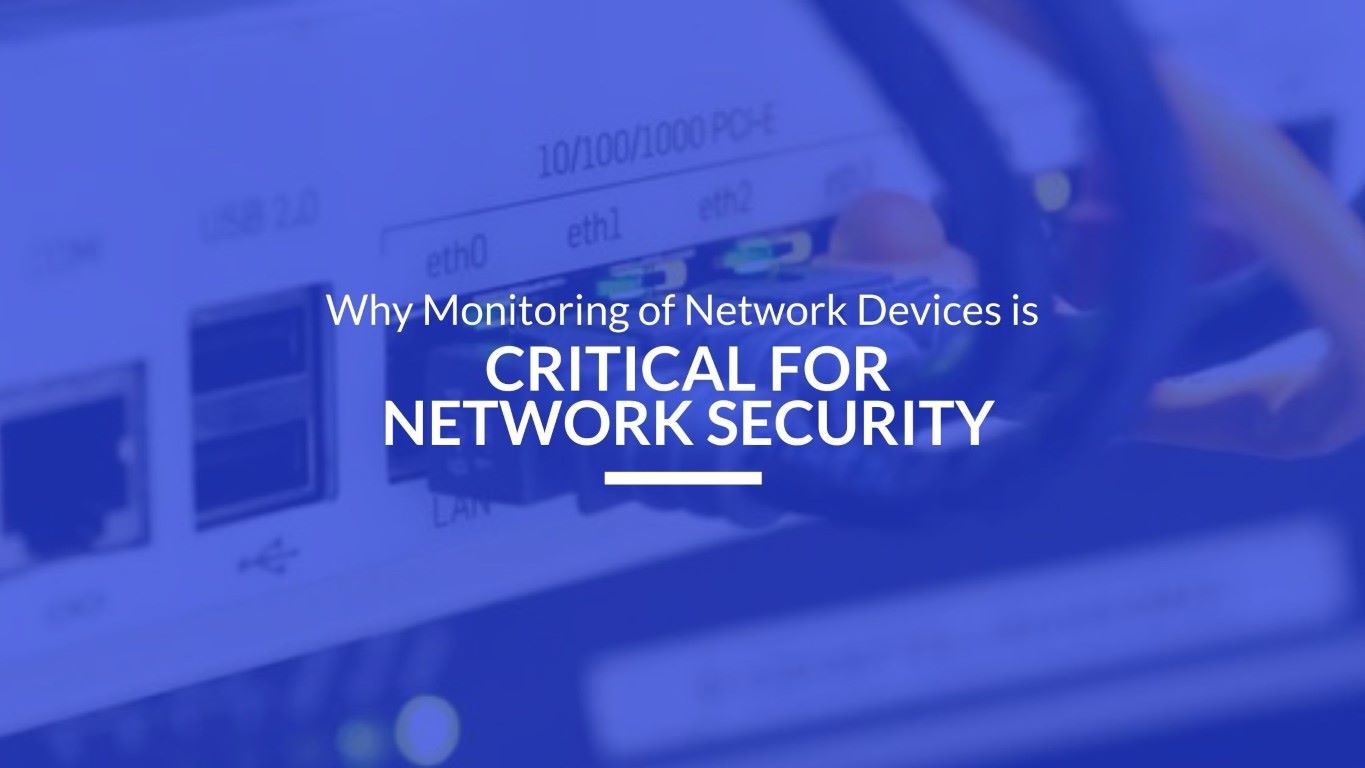For any organization to perform at the pinnacle of their capabilities, it is necessary to have a secure network infrastructure. To ensure that the network infrastructure is secure, it is almost a necessity in modern times to closely monitor the routers, its activity and performance, switches and the rest of the network devices. There is a chronic need for organizations to be able to detect threats as quickly as possible and investigate them. The threats that are of concern are the ones which threaten the perimeter security. Changes to configurations which are unauthorized, logon attempts that are suspicious in nature and the threats to scanning are all threats which threaten the perimeter security. For example, if there is a failure to detect changes being made to the configurations of the network device which are improper in nature within a suitable time then there is the risk of leaving the network prone to attackers.
Common Security Issues for Network Devices
Misconfiguration of Devices
Changes to configuration that are improper in nature remain one of the areas that pose a crucial threat to network devices. Essentially a singular change that is improper has more than enough capability to be able to weaken the perimeter security. Improper configuration changes are also responsible for raising concerns during regulatory audits and are also capable of causing outages which can incur heavy costs which can halt business. To achieve the desired level of control and insight it is necessary to couple audits of network devices with capabilities that assist in alerting. The combination of the two allows the network security infrastructure to detect any improper configuration changes almost immediately and provides insight as to where the change is taking place from and what is being changed. This helps an organization to hold users accountable while also assisting in finding out security incidents which have all the potential to be extremely harmful and cause real trouble in the networking infrastructure.
Logons which are Unauthorized
Majority of the attempts which are made to log on to a network device are deemed by network administrators as valid attempts to log on. However, it must be noted that in these log on attempts are hidden few invalid log on attempts which bear the full capability of harming an organization’s networking infrastructure. If these logon attempts which are suspicious in nature are not detected timely then the organization’s networking infrastructure will exhibit vulnerabilities towards attacks which are done with the motive to hack their way into the network. Alerts should be sent immediately about events which are unusual and do not take place regularly which in turn will let the IT officials take prompt and appropriate action which significantly reduce the scope of inflicting damage. For example, a device which is being accessed by an administrator on an off day or in the case of device being accessed after business hours, logon attempts which have notified about failing, and the access rights being modified, etc
There is another advantage to having a system of network device monitoring and alerting in function as it is a necessity for compliance audits. The way it helps is by providing evidence that users who are privileged and the activities on the devices that they use are being monitored closely.
Logons with the help of VPNs
In the modern days, a number of organizations are of the opinion of implementing virtual private network (VPN) access as a security measure for remote connections. Whereas VPNs are being widely used to significantly bolster the security of remote connections there are however a lot of risk associated with the implementation VPN which no organization can afford to overlook. Networking practices over the years have shown that VPNs do not provide security on a holistic level and any VPN connection comes with some risks. There is a stark difference in how VPNs should be used and how they are possible to use. Under ideal circumstances, the rights which lets one access network resources with the help of a VPN are granted only after proper approvals and users are only allowed access to only those assets which are pivotal for them to do their jobs. The reality however provides a different picture of VPN functionality. In reality, VPN connections have the provision to be used by any and all employees in the organization without the requirement of approvals. It is therefore imperative that threats are being spotted almost instantaneously. Threats such as a user attempting to connect with the help of a public Wi-Fi, a user who doesn’t regularly avail the services of a VPN, all of a sudden starts using it, should be mitigated at the earliest possible scope. Vigilant monitoring of the network devices and at the same time keeping track of each VPN logon attempt is an extremely effective measure which helps to quickly gain insight as to who tried to access the network devices, the IP address from where each authentication attempt was made and the reason as to why each of the VPN logons failed.
Threats by Scanning
Scanning of network devices is not under all circumstances a hostile procedure but it can be conclusively said that hackers have often used it to gain vital information about the structure of a network and also to extract knowledge about its behaviour so that they can seamlessly execute an attack on the network. If network devices are not monitored for threats which come out of scanning there is always a possibility that improper activities can be missed till there is a data breach which inevitably results in sensitive data being compromised. Monitoring of the networking device and having a fast-alerting mechanism will assist in defending the network against scanning threats. It works in way where which host and subnet were scanned can be detected almost immediately, it is also possible to determine the IP address from which the scanning was initiated and lastly, it helps to understand the number of scanning attempts that were made.
How to Start with Auditing of a Network Device
There are three basic steps which provides invaluable support when getting started with proper network infrastructure monitoring. However, it must be noted that these recommendations are merely general guidelines and for best results these guidelines should be altered to meet the needs and requirement of an organization
- Risks being regularly assessed and Perform Penetration Tests.
The IT officials of an organization need to be aware about the attack surface area and should be able to detect vulnerabilities that not only pose a risk but also threaten the organization’s entire networking environment. Whereas regular assessment of risk is of great assistance and helps a great deal but it is also an absolute necessity to perform regular penetration testing. Penetration testing should be highly regular and should be used to identify flaws in the network devices before they fall to the hackers to be discovered and exploited.
- Figuring out which devices have the requirement to be audited.
There is no fixed number or list of network devices that should be monitored or is needed to be audited by an organization. The devices which need to be audited is figured by the specifics of the nature and type of the business, the industry in which the business functions and finally the size and architecture of the networking environment of the organization.
- How frequently audits should be made.
The frequency at which audits should be made also depends on certain parameters within the networking infrastructure of the organization. It is however highly advisable that a monthly check of the overall condition of network devices should be made so it is possible to receive immediate alerts on various activities that might look suspicious and might pose a threat to the networking environment of the organization.
Conclusion
It can be safely concluded that it is imperative to have a robust, dynamic network auditing system to ensure a holistic approach is being taken towards securing the entirety of an organization’s networking infrastructure.

